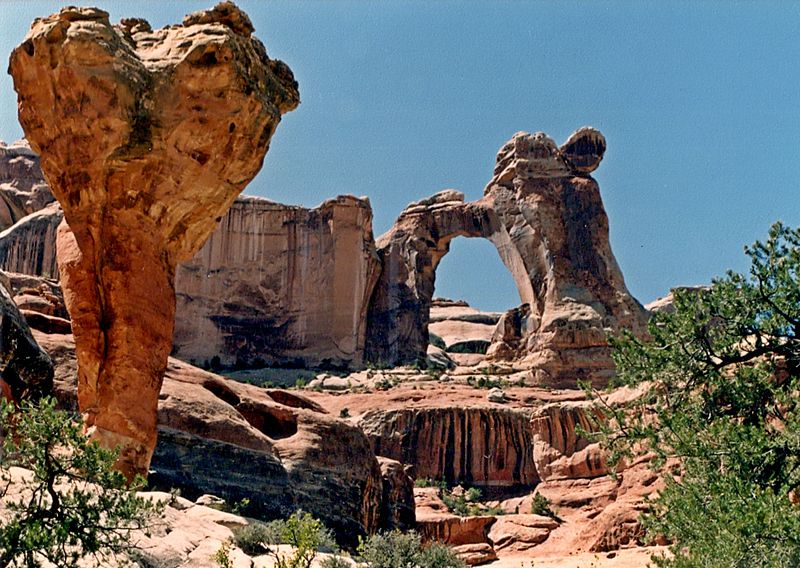Interesting facts about Canyonlands National Park

The United States has a number of national parks that you don’t hear about every day, but are as gorgeous and spectacular as the most popular ones. One of those “forgotten” parks is the awe-inspiring landscape of Canyonlands National Park in Utah. The extraordinary sceneries in the park look like they’re fake and a part of a movie set. Guess what, all the massive stone structures are natural and real. Here are some interesting facts about Canyonlands that you might not know. Let’s get started!
How large is Canyonlands?

Canyonlands encompasses a land of 227,598 acres which can be compared to 172,121 football fields. Canyonlands National Park contains four different areas including Island in the Sky which is closest to Moab, The Maze and Needles district are farthest to the west and south of Moab, and the Rivers section is where you can join one of our multi-day Cataract Canyon Rafting adventures.
What is the highest elevation in Canyonlands?
Cathedral Point in the Needles District at 7,120 feet is highest elevation point in the park.
What is the lowest elevation in the park?
The Big Drop Rapids section in Cataract Canyon on the Colorado River at 3,700 feet is the lowest point in the park. This area is perfect for river rafting, and you can choose between one-day and multi-day rafting excursions where you can explore the beauties of the canyons.
Who was the first person to raft cataract canyon on the Colorado River

John Wesley Powell was the one who led the first known successful rafting expedition in wood boats in 1869!
When did Canyonlands become a national park?
Bates Wilson, the superintendent of Arches National Park in the 1950s and 1960s started a campaign by leading Government officials on jeep tours through the area. Secretary of the Interior Stewart Udal presented the campaign in Washington D.C. and in the end 1964, President Lyndon Johnson officially established Canyonlands as a National Park.
Have people lived in Canyonlands?

According to the traces, the first people to live Canyonlands were 10.000 years ago. They left behind beautiful rock art that can be still seen today.
What movies were filmed in the park?
The famous ending scene of 1991 “Thelma & Louise” was filmed above the Colorado River in Canyonlands National Park. “127 Hours,” starring James Franco, tells the story of Aron Ralston who got stuck in a slot canyon in the Maze District and had to self- amputate his arm to survive.
What rivers run through the park?
Colorado and the Green River flow through the Canyonlands, dividing the park into four sections.
What plants grow there?

The most common plants you can see in the park are Indian ricegrass, galleta, grama, needle and thread, black brush, shadscale, squaw tea, cottonwood, willow, and tamarisk.
Reptiles in Canyonlands
If you are a lizard fan, then this park will be your heaven. The side-blotched lizard, the northern whiptail lizard, and the midget-faded rattlesnake are the most common reptiles you can spot in the park. They prefer to be out during the daytime and sunbathe on the rocks, so make sure your camer a is handy.
Mammals
The harsh high desert climate is not kind to the animals, so there are not too many species that can support the heat. Besides the 60 species of rats and mice, Canyonlands is a home to desert cottontail, kangaroo rats, and mule deer. You will be lucky to see some of them during the day because they are only active after sunset when the temperatures drop. Black bear can also be seen sometimes close to the rivers in the Needles District of Canyonlands.
If you have any comments then please drop us a message on our Outdoor Revival Facebook page
If you have a good story to tell or blog let us know about it on our FB page, we’re also happy for article or review submissions, we’d love to hear from you.
We live in a beautiful world, get out there and enjoy it. Outdoor Revival – Reconnecting us all with the Outdoo
